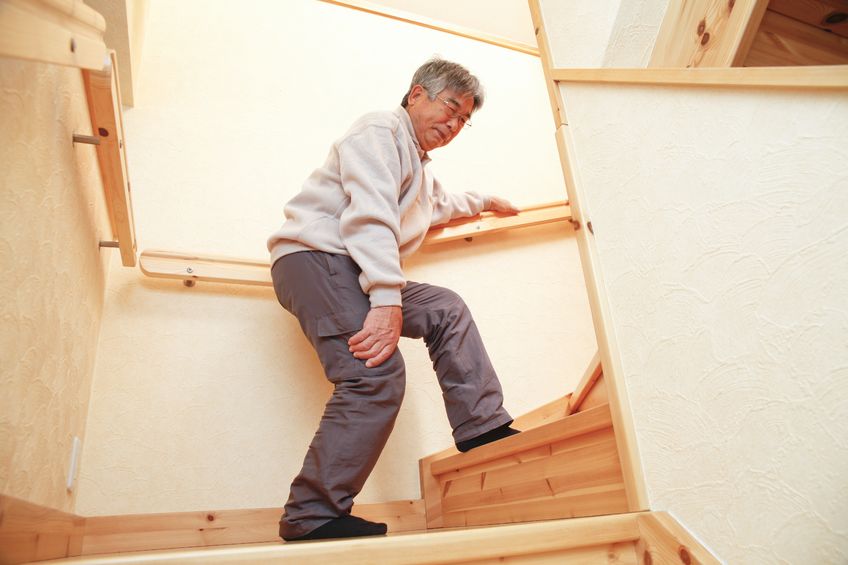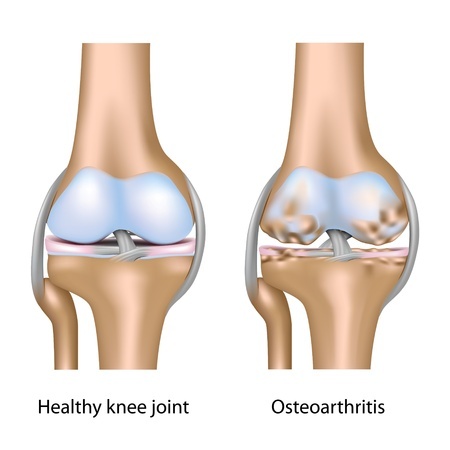Managing the Osteoarthritic Knee
Treating the Osteoarthritic Knee through Lifestyle Change
by ACE Physical Therapy and Sports Medicine Institute
Tips for Osteoarthritic Knee.
- Knee pain can be controlled with proper exercise in many instances.
- Using the RICE (rest, ice, compression and elevation) principle of acute injury management can help alleviate pain in an arthritic knee.
- Increased body weight and/or carrying excessively heavy objects can lead to knee pain and arthritic conditions.
- Abnormal gait resulting from a painful knee can lead to other painful body parts.
- Seek the advice of your Physical Therapist for an appropriate exercise routine.
Millions of Americans suffer from an osteoarthritic knee. While this degenerative disease commonly affects older people, there is a rising trend of young people suffering from this condition. Many people can dramatically limit the severity of this condition if they will simply follow the guidance of their healthcare professionals by making essential lifestyle changes.
The knee joint consists of three bones: Femur, Tibia and Patella. The ends of Femur and Tibia are covered with a smooth, shiny cartilage called Hyaline cartilage. This type of cartilage provides a surface that nearly eliminates friction when the two bones move or articulate together. If this surface encounters too much force (compressive or sheer) during someone’s lifetime activities, the cartilage can be damaged beyond repair.
The osteoarthritic knee is a knee where the cartilage is damaged, wearing thin or completely gone. It is painful, can cause swelling, and can limit a person’s ability to walk. There are surgical procedures that will help to restore a resemblance of the original cartilage, but the repair is never as robust and strong as the original. If the cartilage is left unattended, it can get so bad that the entire joint will have to be replaced.
While Osteoarthritis (OA) of any joint is painful and a worldwide health concern, OA in the knee joint is debilitating because it limits a person’s ability to move. Once movement is restricted, quality of health and overall health can degenerate to a point of no return. The cost of a knee replacement surgery is staggering, and if a younger person has it performed there is a strong possibility that they will require a second one, eventually.
The healthcare professionals and general public must begin to be more resolute in demanding the change in lifestyle and activities of the patient who has OA in their knee. The societal cost of this condition is astronomical and will continue to be one of the most common conditions found within our population. The patient must change their lifestyle in a way that will help to protect the remaining Hyaline cartilage within the involved knee. The longer a person can avoid surgery to replace their knee the better.
Causes of OA are numerous and some cases cannot be controlled such as a genetic predisposition, but many times OA can be controlled through a change in everyday habits. Healthcare professionals must make it very clear to our patients what will be in their future should they choose to remain as is.
We must teach our patients:
• How to develop and maintain a new lifestyle
• How to lose weight through proper nutrition and exercise
• What physical activities can help improve health without irritating the Osteoarthritic Knee
• Possible life choices about changing careers that are too physically demanding or changing home if the environment is too hard on the knee (like too many stairs)
Healthcare professionals can help community planners develop town centers that are conducive to this common condition by suggesting layout requirements as well as positive activities that will take place at those locations that support or help people with OA.
Healthcare professionals can help develop custom training programs for patients that focus on exercise routines that don’t overwork the OA knee but will help to increase lower extremity strength and flexibility. Proper training along with other lifestyle changes can help patients
Every exercise program has to be tailored to that specific person. Also, there are knee braces that can be used to “unload” the degenerative area of the knee. A combination of a good exercise program and the use of one of a specific knee brace, can enable a person to live a relatively pain-free, modified lifestyle.
OA needs to be a major concern to everybody. Ultimately it will place a tremendous burden on our society financially, and the loss of functional capabilities of the patient can reduce their ability to be a productive citizen. Healthcare professionals are in a position to help alleviate some of the major problems that will occur in the future, and we have to be aggressive with our approach, encouraging our patients to make the necessary changes in lifestyle. We have to lead our patients in the correct direction to help preserve their knee joints for as long as possible.
Read more articles on our main website blog at: ACE-pt.org/blog
Vist our main website at www.ACE-pt.org


